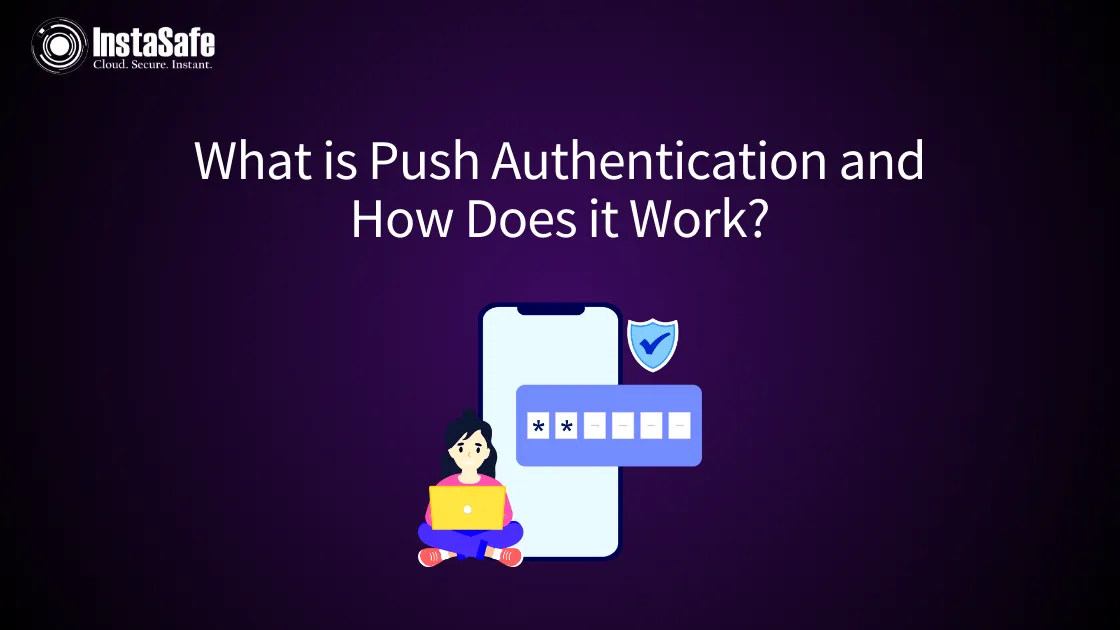What is Push Authentication and How Does it Work?

Security is the topmost concern for anyone with a network or website. Digital presence in the form of web applications and pages has become much more than just the existence of your company or organisation for marketing and branding purposes.
It has become a business platform, a transactional platform, and a huge database of details and information.
Such sensitive information needs protection, and authentication of identity is one way to verify the user’s authority to access the network. These procedures have evolved, and now we have excellent procedures for verification, identification, and authentication.
Two of the best and most popular security systems are two-factor authentication and multi-factor authentication. One factor of these two systems is push authentication.
What is Push Authentication?
Authentication, in the digital sense, is the process of proving a person’s or user’s identity to be what they say it is. This process authenticates their authority to access an account by verifying their identity!
With time, there have been various additions to this process of identifying the true user. Some really popular modes of authentication include push-based authentication!
Push authentication is a layer of security used by two-factor or multi-factor authentication systems in order to add a padding of protection on the network. This mode demands you to use a different device, mobile or laptop, at the time of the login procedure.
This kind of authentication doesn’t require you to enter a one-time password sent to you by email address or SMS. It demands you to press “Accept” or “Decline” on the prompt the system sends your way.
So, when you enter your username and password while logging in, the system reaches your registered mobile device with a prompt. You have to act upon this prompt as soon as possible! Let us understand the process in detail!
How Does Push Authentication Work?
- When you create your account on an application or website for the first time, you will have to enter a number of details. These details include your basic personal information, mobile number, email address, and identification number.
- Once you enter these details, you will have to create your username and password for the account. This will be used for logging into the account later on. These credentials are critical, and you have to remember them at all costs. Your password should be robust since it is the first layer of authentication for your account.
- Along with all the other details, the device you are logging in to your account with is also saved as a reference device.
- Now, when you begin your login procedure, you will have to enter your registered username and password.
- When you enter this information, the server will send your registered device, mobile number, or email application a prompt or notification. This notification is a push authentication layer in the MFA.
- This prompt needs a thumbs up from your registered device whether or not it is you who is logging in. If it is your login attempt, you will press the “Accept” command. If it is not your login attempt, and you fear it is a sneaky hacker, you will press the “Decline” command. (Change your password after that.)
- Nowadays, systems send a number-request push authentication to emphasise and elevate the security level. The prompt will say, “If you are attempting to log in from ______ device, please press 34UFC; if not, ignore the prompt and change the password!”
Advantages and Disadvantages of Push Notifications
Final Words
It is safe to say that push notifications are a safe and convenient way to authenticate the user’s authority to access the network. It becomes easy for all the users to understand and operate. Be it someone who is extremely vary of threats and aware about security or a user who doesn’t know anything about security, both can operate with push notifications easily!
The integration of push authentication with multi-factor authentication is very easy and possible. In fact, it is recommended. You can go to reputed security solutions and service providers like Instasafe to secure your company’s network from any unwarranted access and entrance!
Frequently Asked Questions (FAQs)
1. What is the difference between the functions of push . authentication and OTP?
With push authentication, all you need to do is press the accept or deny command, in order to authorise access to your account. With OTP, you will have to enter the 6-7 digit code in the system. This code that is sent to you is either an SMS or an email. Nowadays, we have a hybrid of these two in the form of Push OTP!
2. Can push authentication notifications be text messages?
Text messages on your mobile device are different from push authentications. Text messages require your mobile number, whereas an application sends a push authentication notification that can or cannot demand your mobile number.
3. Are SMS OTPs better than push authentications?
Push authentication can be more secure and safe if the registered device is in your possession and not somewhere else. Otherwise, it is better to have the OTP system of authentication.
